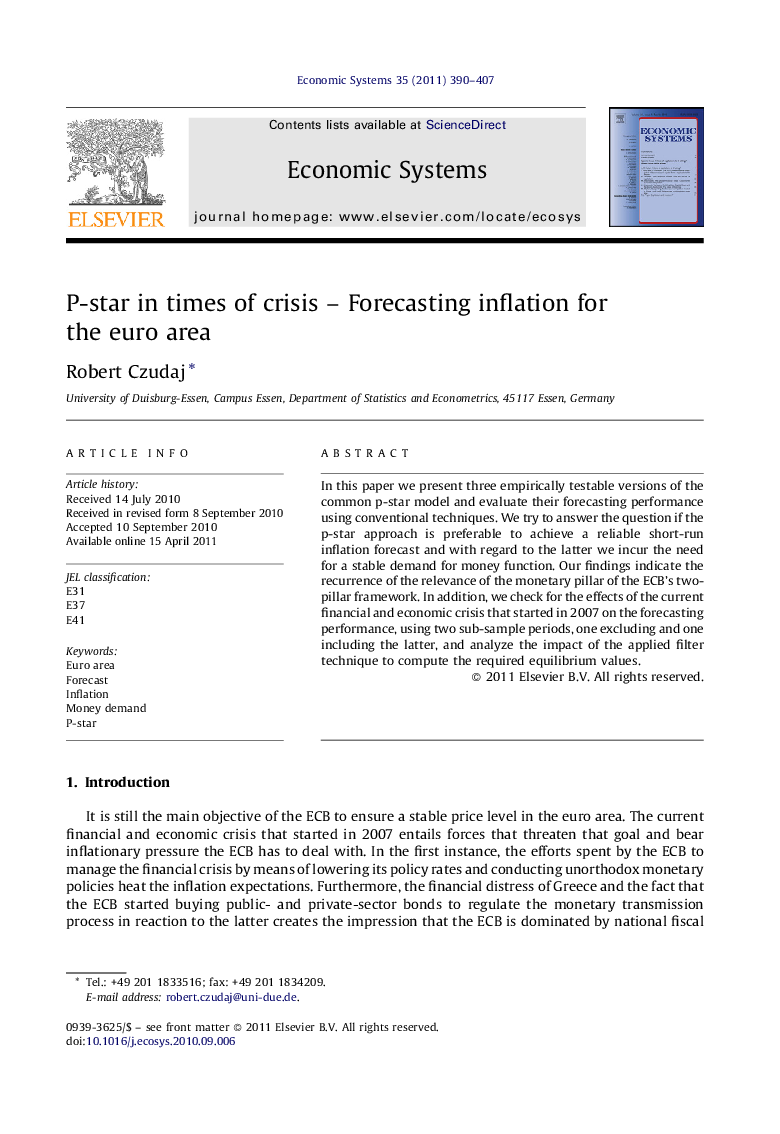| Article ID | Journal | Published Year | Pages | File Type |
|---|---|---|---|---|
| 5056445 | Economic Systems | 2011 | 18 Pages |
In this paper we present three empirically testable versions of the common p-star model and evaluate their forecasting performance using conventional techniques. We try to answer the question if the p-star approach is preferable to achieve a reliable short-run inflation forecast and with regard to the latter we incur the need for a stable demand for money function. Our findings indicate the recurrence of the relevance of the monetary pillar of the ECB's two-pillar framework. In addition, we check for the effects of the current financial and economic crisis that started in 2007 on the forecasting performance, using two sub-sample periods, one excluding and one including the latter, and analyze the impact of the applied filter technique to compute the required equilibrium values.
⺠We present three empirically testable versions of the common p-star model and show their good performance in forecasting the rate of inflation. ⺠Our findings indicate the recurrence of the relevance of the monetary pillar of the ECB's two-pillar framework. ⺠We check for the effects of the current financial and economic crisis that started in 2007 on the forecasting performance using two sub-sample periods. ⺠We analyze the impact of the applied filter technique to compute the required equilibrium values.
